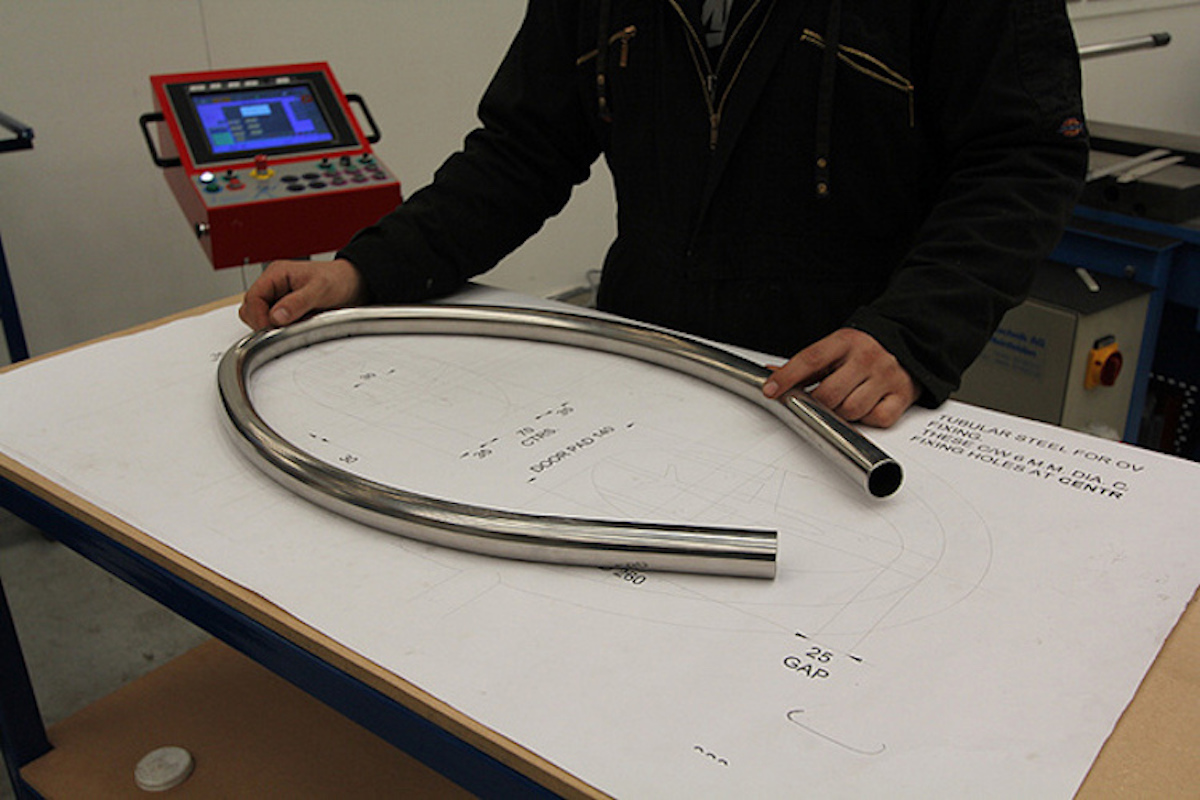- February 17, 2017
- No Comment
Bending Pipe Without a Bender—Homemade DIY Style!

Circus strongmen in the 19th century bent steel with their bare hands to show off their amazing strength—but you don’t need to be dressed in a leopard-print leotard to carry out simple DIY tasks around the house. Most people can actually bend soft metals, such as copper and aluminium, with their bare hands. So next time you need to bend some piping for a project, you could rush to the hardware shop to grab a pipe bender, or you could simply give your muscles a workout.
Getting to Know Your Metals
There are some restrictions to bending metals without a machine. Naturally, humans have their limits and you’ll likely only be able to bend softer metals. Aluminium and copper are both soft enough to bend without much effort, but things will get considerably harder with alloys such as stainless steel. Another thing to keep in mind is the type of bend you’ll achieve. Softer metals will produce a ‘U’ shaped bend, while harder metals will look more like a ‘V’.
Tools for Bending
Bare hands
If you need a rough bend in your pipe and have limited resources you can simply use your bare hands. Most people can bend pipes up to an inch thick, but any more than that and you might need some tools or extra help. Before bending the pipe, it’s a good idea to wrap the ends in something to give you extra grip and protect your hands. Leather is one of the best materials for this type of work. Simply cut some into strips and wrap them around the ends of the bar—you can choose other materials, such as thick cloth, but they won’t provide the same amount of leverage. Then, firmly grip the ends and choose the most comfortable position to bend, for example an overhand grip with the bar straight out in front of you.
Blow torch
One of the most common ways to bend pipes without a machine is by using a blow torch. Extreme heat is concentrated on the area you want to bend, making it malleable. There are a number of ways to use heat to bend pipes, which we outline below. Before embarking on any technique, make sure you mark out where you want to bend. It’s also a good idea to create a template of the bend and measure your pipe against it as you go. Most people use cheap wooden material, such as MDF, to create large-scale templates.
Vice
Secure your pipe in a vice so it can’t move. Make sure there is a decent amount of space either side of the area you want to bend so that you can get a good grip when bending. With your blow torch, apply constant heat to the area you want to bend. Remember to heat the whole area and not just one side of the pipe as this will help it bend evenly. When the pipe is red hot, gently start to bend it. You can do this with your hands, but wear thick gloves as the pipe will be extremely hot. If you have difficulty getting leverage, try using a wrench. Or use another piece of pipe as a lever. If you’re still having difficulty bending the pipe, rope in someone else to help. Sometimes it makes things easier if one person heats the pipe while the other bends.
Related: How to Bend Pipe with a Pipe Bender
Bending Springs
Bending springs are simple tools which prevent pipes from developing a kink when bent. There are two types of springs available: internal and external. An internal spring is inserted into a pipe immediately after it has been heated. It supports the pipe as it’s bent to ensure that it doesn’t collapse. Similarly, external springs support the pipe on the outside. They surround the pipe and prevent it from spreading as it’s bent.
External springs are generally used for smaller pipes and internal springs for larger pipes. While they’re useful for producing an accurate and even bend, springs are usually restricted to certain sizes. So if you’re bending more than one size of pipe, you’ll need to buy different sized springs.
Sand
Believe it or not, sand is an invaluable material for ensuring an even bend. Block one end of the pipe with material, such as scrunched up newspaper or cloth. Then fill the pipe with sand—ensure that the sand is tightly compacted. Block the other end of the pipe and then heat the bend area. When it’s red hot, gently bend it by hand.
Bending pipe with your bare hands is a cheap and easy way to achieve quick results, but be careful not to cause yourself injury in the process. If you experience pain while bending, stop immediately. Also, make sure you take proper safety precautions when using a blow torch, such as wearing goggles and thick gloves. If you do find that your pipe is difficult to bend or you are embarking on a large-scale project, consider investing in a pipe bending machine.




